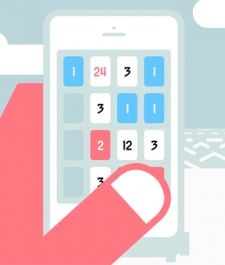"The people at the bottom of the barrel, the parasites, they're winning by a lot."
The victim of a disastrous flirtation with free-to-play and a contributor to the clone-afflicted Ridiculous Fishing, Greg Wohlwend is no stranger to the harsh realities of mobile development.
Yet it's the fallout following the release of Wohlwend and Asher Vollmer's Threes that has arguably hit hardest. Since its February release, the duo's fiendishly compelling number-combining puzzle game has been drowned in a flood of copycats.
The imitators may not have stopped Threes becoming a hit, but they've undoubtedly impacted on the success of a game that Wohlwend and Vollmer spent more than a year agonising over.
Speaking to PocketGamer.biz in our latest 'Making Of', Wohlwend and Vollmer recount the story of the game's creation, while reflecting on the impact of the imitators and the catharsis that came with the duo's mammoth, 45,000 word developer blog.
Flailing
"It started with procrastination and an ill-fated attempt at being a broader human being," says Asher Vollmer of the creative origins of Threes.
"I wanted to try working on a project that wasn't game related, so I opened up a word processor and tried writing a short story. It turns out that writing is the hardest thing on the planet, so I ended up writing two sentences and flailing for the rest of the evening.
"Mid-flail I started playing with the arrow keys in Word and watching the cursor move about. That's when it occurred to me that, ‘Hey I bet I can make a game that only uses the arrow keys.' I insta-closed Word and opened up Unity and then ten hours later the very first prototype existed."
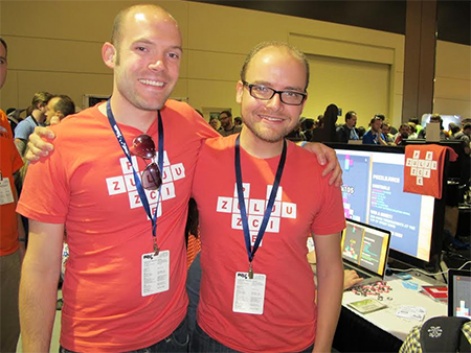
Three's central concept of moving and combining numbers on a grid was there from the start then, but the game's journey from prototype to finished game wasn't an easy one.
A game that's mine
In early 2013 Vollmer was juggling responsibilities. By this point he had already contacted Greg Wohlwend with whom he had previously worked on hit iOS title Puzzlejuice, and the duo were attempting to elaborate on the Threes prototype.
Meanwhile, by day Vollmer was working at LA-based indie studio, thatgamecompany. But progress on a follow-up to the much lauded Journey was developing at a "snail's pace".
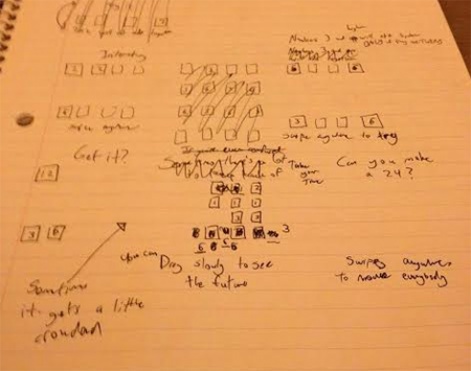
"The game is going to be incredible," wrote Vollmer on his blog at the time, "but it is moving slowly. There are years remaining on the project and, quite frankly, those are years I don't want to give up for a game that isn't truly mine."
So in April 2013 he left, in order to pursue a game that was truly his.
Similarly, Wohlwend wasn't able to devote all of his time to Threes early in development. From late 2012 until April 2013, he bounced from dealing with the failure of Gasketball,to launching Hundreds with Adam Saltsman, to flying to New York to crunch on Vlambeer’s Ridiculous Fishing.
All of this took its toll on Threes. With neither Vollmer nor Wohlwend able to fully focus on the game for months at a time, and with a persistent indecision regarding the direction in which to take it, progress floundered.
Boring
It wasn’t until June 2013 that development started ramping up properly again, as Vollmer and Wohlwend were able to dedicate more time to wrestling with the game and the fear that, simply put, it was too dull.
"So we had these numbers moving around on a grid and people liked it," says Vollmer. "But the game was too easy and not interesting so we kept adding things to it. We added walls, arrows, a monster, some powerups... but all of those things were just band-aids on a much much deeper problem.
"They were addressing the symptom of ‘this is a boring game’ and not the underlying cause."
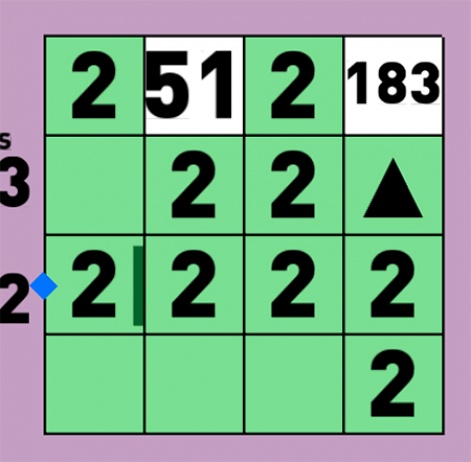
"It was only after we started stripping those things away did the true boring begin to show. When there were just numbers left on the grid I felt free to tweak the foundational rules to the game. That's when real progress started happening.
"It helped that I had quit my job at thatgamecompany. I took time to reflect on the values I learned at TGC and the core takeaway was: build systems with elegance. So that's what we did. As soon as we set the rule ‘only twins can merge with each other’ the game design went from 10 percent complete to 90 percent complete.
Dressing the bones
Threes’ journey from simplicity to convolution and back again was reflected in the game’s art, as Wohlwend endeavoured to capture the spirit of the game in its different states. As Threes evolved, food stuffs and argyll-patterned "argoyles" came and went.
"With the combining aspect of Threes, we always felt like it could really have character," says Wohlwend. "There was the opportunity for that. I don't think Threes would be Threes without the characters."
I don't think Threes would be Threes without the characters.Greg Wohlwend
"The design was always fluctuating so the art was a response to that. When a monster was thrown in the ring, I hustled to find a way to make a monster work within the game structure.
"Sometimes you can fit a good idea over top of the game's ‘bones’ but that's more of a eureka kind of moment and you can't manufacture those. Threes had a few eureka moments, but they all turned out to be false alarms."
"In the end, paring it down to what was honest about Threes, the numbers led us to the realization that this game just wanted to be tiny all along. So making tiny little characters was the natural step."
For both Wohlwend and Vollmer, complexifying and then abandoning features and art styles wasn’t wasted work. Instead it made the finished game richer.
"Many novelists will write hundreds of pages on a single character, none of which sees ink in the finished book," says Wohlwend. "I can definitely see how those intangibles tie in. It creates a confidence and vividness that's unmatched."
Lighting up
Vollmer and Wohlwend never expected Threes to take off in the way it did.
"Our expectations were low throughout development," says Vollmer. "We knew this was a tiny game and we expected a tiny reception. A few impassioned fans, like Drop7, and then we would drop off the face of the earth - like Drop7."
Yet even before release there was evidence that Threes was capable of digging its claws deep into players.
"We were seeing people, friends and others playing the game ravenously," says Wohlwend. "I had an office-mate, Tommy, who would eye my phone every time I came in because he wanted to play. He'd regularly run my battery down.
"That was a great sign, but you don't really believe it when it's happening. You keep your head down and keep your hopes down because anything can really happen."
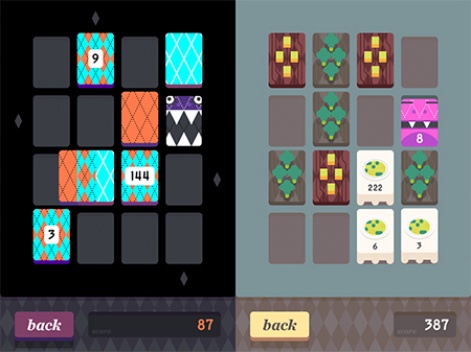
"I remember, the first moment when I realized that we might be on to something was when I watched a stream of the game being played a day before release," says Vollmer. "The chat lit up!"
"People were going nuts for this little game about numbers. I remember texting Greg in awe... ‘What's happening?’"
The flood
Launching in January 2014, Threes was an instant hit, peaking at number one on the App Store in 60 countries around the world and performing strongly on Google Play.
"It’s done super well for us," says Wohlwend. "The most successful game I've been a part of and I've made a few, all on iOS."
But the euphoria of labouring over a game for more than a year, then seeing it find its way into the hands of hundreds of thousands of gamers, has been tempered by the copycats.
It began just 21 days after release, with what Wohlwend calls the "different, but not" and "not very fun" 1024, which aped much of Threes’ design and launched for free on iOS.
Then a few days later the Italian designer Gabriele Cirullio released the open source 2048 and the floodgates were opened. Spin-offs based on the internet meme Doge, as well as Doctor Who, Flappy Bird, Tetris and hundreds more followed.
"Gabriele didn't hurt us I don't think and even if he did, we don't feel ill will toward him or that there was any malice," says Wohlwend. "But those that took advantage of his open source and are profiting heavily from it... that sucks not only for us, but for game designers everywhere.
"The people at the bottom of the barrel, the parasites, they're winning by a lot. Game designers need money, years worth of living expenses, to make games so it basically means we can spend less time on our games. It is the way it is."
Healing
Vollmer and Wohlwend’s response to the flood of imitators was to put together a huge post, documenting the emails they shared over the game’s year-plus development spell. It was an attempt to highlight the vast amount of effort that went into their ostensibly simple game.
"It had very potent healing powers," says Wohlwend. Just the sheer work of copy and pasting and editing 45,000 words into a readable email thread over the course of four days was exhausting. But the emotional stuff on top had me drained.
"When I tweeted it, I just wanted so badly to get it out there. My brain was telling me to wait until Monday, do some editing, let Asher look over any mistakes I made. But I just had to hit the button.
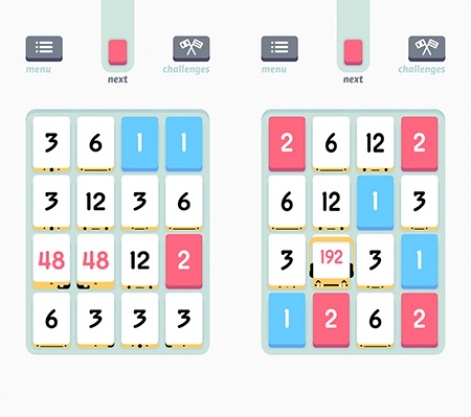
"I think this stuff and other dramatic things happen to developers maybe more than we talk about," adds Wohlwend. "It’s not like we're in a dark corner curled up or anything like that, but it takes a real toll and I feel it's healthy to share that with folks, so we know it's not just us.
"The response to the emails has really been an uplifting force for us, to the point where it's nearly healed. We can't thank everyone enough for their support."
The story of Threes is unique. Simultaneously a tale of remarkable success and spirit-crushing disaster, it reflects the very best and worst that mobile development has to offer. The parasites, as Wohlwend calls them, aren’t going to go away in a hurry. But Threes shows us that with the right amount of effort they can be overcome.

